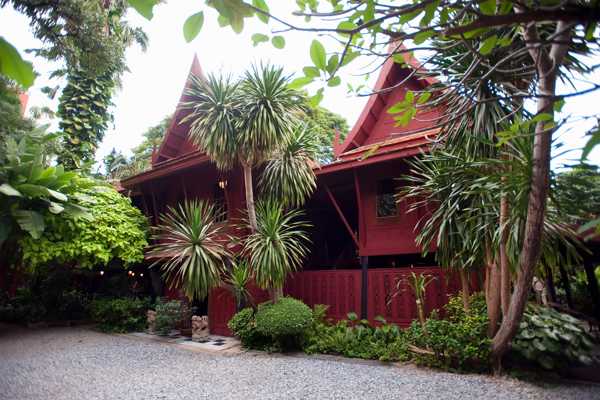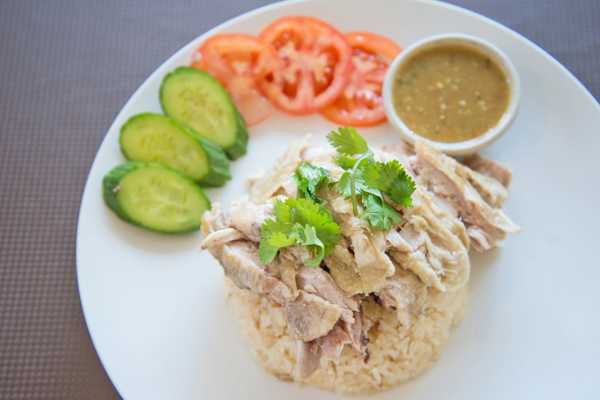Like the charming people, exotic fruit greets you on almost every corner in Thailand. The country's fertile plains and hot tropical climate, as well as its more temperate northern regions, means that pretty much anything grows here. As a result, few places on earth can claim to have such a plentiful supply of gorgeous and tasty fruit.
Take advantage of this abundance by trying as many as possible. Yes, many may, at first sight, seem strange – the spiky stinker durian being the best example. But rest assured, once you've had a try you'll soon be chomping nonstop. Not only is fruit cheap, healthy and nutritious, it's also a great way to rehydrate – a superb snack. If you're feeling really adventurous, why not also take a leap of faith and try your portion the way the locals have it – with a small bag of salt, sugar and chilli?
- 1
Mango (Ma-Muang)

- Ẩm thực
One of the most well-known fruits in Thailand, there are many varieties of delicious, refreshing mango and a few different ways of eating it. When ripe, it can be halved and eaten with a spoon, while many choose to enjoy it with sticky rice and coconut milk (Khao Niew Ma-Muang). Others like to eat it half-ripe and dip the crunchy slices in sugar. Also makes a wonderful juice.
- 2
Mangosteen (Mang-Kut)

- Ẩm thực
Little known outside Thailand, the mangosteen is a bizarre-looking fruit that contains in its round, deep purple shell a delicate, flavorful white flesh that's eaten in sections. The number of sections found inside match the number of petals found on the bottom of the shell. A delicious, distinctive flavour also makes it wonderful for juices.
Bản đồ - 3
Rambutan (NgoR)

- Ẩm thực
Its name is derived from the Malay word rambut, meaning 'hair' – a result of the fruit's red-and-yellow spiky rind. Peeling this away reveals a firm, white, translucent flesh, which the Thais are especially adept at delicately carving away from its large seed.
- 4
Durian (Tu-Rian)

- Ẩm thực
Surely the most controversial fruit on earth, durian is to its fans a rich, unique-tasting fruit. To its critics, it's a putrid-smelling, lame duck of a fruit. Its extremely strong aroma – which some say resembles rotting fruit down a blocked drain – let alone its aggressive look, is enough to put many off tasting it at all. Others swear by it. It's the most expensive of all Thai fruits and actually banned (yes banned!) from some public places, hotels and on planes.
Địa điểm: Thailand
- 5
Pineapple (Sapparod)

- Ẩm thực
The Kingdom is one of the largest producers of this flavourful, juicy fruit. Growing year-round, it's best planted in sandy seacoast soil and grows on a low lying plant. It's an incredibly versatile fruit that finds its way into desserts, drinks and savoury dishes.
- 6
Papaya (Ma-La-Kaw)

- Ẩm thực
A delicious year-round fruit that's at its best between March and June, the papaya is oval in shape and cut lengthways to remove the small black seeds in the middle. When ripe, the soft dark orange-coloured meat is full of flavour. Thais like to shred unripe papaya and mix it with lemon juice, chillies, peanuts and dried shrimp to make som tam – one of Thailand's favourite salads.
- 7
Dragonfruit (Gao Mung Gorn)

- Ẩm thực
The fruit of a cactus plant, the strange, unearthly looking dragonfruit has a lovely soft flesh that looks somewhat like that of kiwi fruit and is typically eaten with a spoon.
- 8
Guava (Farang)

- Ẩm thực
Originally from Central America and the West Indies, Guava is now grown in many tropical countries and favoured especially for its fragrant, exotic taste. Available all year round, it makes a popular snack that can be eaten green and crunchy alongside salt, sugar and chilli, or when ripe. Tasty and highly refreshing, guava can also be made into delicious drinks, luscious ice creams or rich jams and jellies. Its Thai name, farang, is also the term that foreigners are known by.
- 9
Pomelo (Som-O)

- Ẩm thực
Similar in size and taste to grapefruit, the meat of the pomelo is succulent and has a delicious sour-sweet flavour. Available all year round, there are many varieties available, coming in anything from pale yellow to orange or red.
- 10
Rose-apple (Chom-Poo)

- Ẩm thực
With a shape much like a pear, the rose-apple has a shiny skin that is either pink or green in colour. Extremely refreshing and with a crisp, crunchy taste, it's often eaten with salt and sugar.
- 11
Jackfruit (Khanoon)

- Ẩm thực
Available between January and May, the jackfruit is roughly the size of a large melon and packs a distinctive aroma and succulent taste. Divided into multiple sections, each of which contains waxy meat surrounded by seeds, it's usually eaten raw, although some Thais like to fry it in a batter.
- 12
Custard apple (Noi-Na)

- Ẩm thực
Light green and about the size of a tennis ball, the flesh of this knobby textured fruit is, much like custard, best eaten with a spoon. The sweet meat contains tiny black seeds.
- 13
Langsat (Lang-sard)

- Ẩm thực
Native to Thailand, the langsat is a small, round, seasonal fruit available between July and October. Use your fingers to prise open the thin, off-white skin and you'll find a translucent, juicy flesh with a slightly tart flavour. An excellent thirst quencher, its flesh falls away into 5 segments and is best eaten raw.
Địa điểm: Thailand
- 14
Longan (Lam-Yai)

- Ẩm thực
A lesser-known sibling of the lychee and rambutan, the longan has a sweet, delicate flavour and grows in the Chang Mai area of Northern Thailand, especially between June and August. The skin is pierced by the finger and the delicious, juicy flesh revealed by squeezing it out of its shell using the thumb and forefinger.
- 15
Lychee (Linjee)

- Ẩm thực
Covered by a red, roughly-textured rind that's inedible but easily removed, the inside of a lychee consists of a layer of sweet, translucent white flesh that has a texture somewhat similar to that of a grape. The centre contains a single glossy brown nut-like seed that should not be eaten. This gorgeous fruit matures from July to October, about 100 days after flowering.
- 16
Sapodilla (La-Mut)

- Ẩm thực
Rather deceptively, the dull and unattractive skin of this fig-like fruit masks the soft, succulent honey flavoured flesh to be found within. A knife is used to carve away the skin, and in Thailand you'll often find it carved into decorative shapes. A definite favourite.
- 17
Coconut (Ma-Praow)

- Ẩm thực
Coconuts are just about the most versatile fruit there is – the juice is more hydrating than water, the soft flesh goes great in desserts, and the nut can be used to make adorable souvenirs. Just be careful when trying to open them!
- 18
Banana (Gluay)

- Ẩm thực
You thought you knew bananas? Think again. There are 20 different types that grow in Thailand, ranging from small stubby ones to large fleshy types, and each has different names. In Thailand, they're eaten in many different ways: dried, boiled, fried, served in sweet coconut milk or, simply, enjoyed fresh.
- 19
Snake fruit (Sala)

- Ẩm thực
The creepy name of snake fruit comes from the pattern of the hard, brittle shell. But crack it open and you'll reveal white lobes of flesh that deliver a burst of sweet and sour flavours. The small seeds are inedible but can easily be eaten around.
- 20
Watermelon (Tangmo)

- Ẩm thực
Thailand's rich soil imparts local watermelons with a delicious flavour. Found in a rich ruby-red and more unusually a golden yellow colour, they are often used as the centrepiece for fruit carving due to the intricate designs that can easily be made using the fruit's thick green rind. You'll find that it's thrown liberally into blenders to make delicious, refreshing drinks.



















